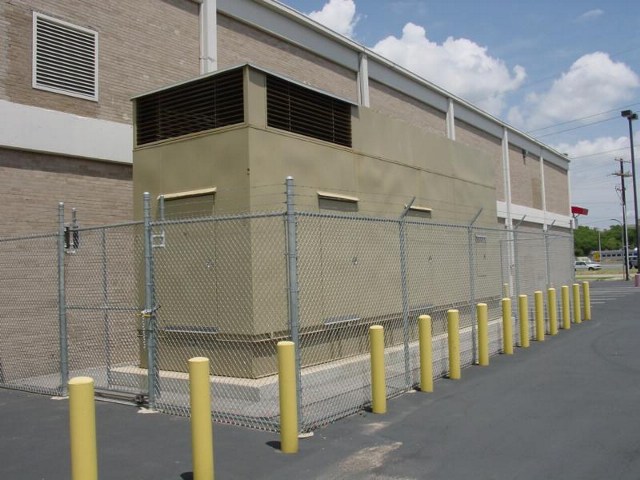
Core Explosions, Splash Damage And Mech "balance"
#21
Posted 29 September 2013 - 10:26 AM
#22
Posted 29 September 2013 - 11:11 AM
 Chupacabralted, on 29 September 2013 - 07:38 AM, said:
Chupacabralted, on 29 September 2013 - 07:38 AM, said:
Not new devs... these are the same guys which did the original trailer. It was in Unreal Engine 3 and they actually have experience developing for that.
As far as the reason for not implementing stackpoling, they couldn't care less about realism. The reason it's not in is the fact it's a really bad mechanic for a multiplayer game (completely random chance to massively injure attackers is not what you want in a fair MP enviroment).
#23
Posted 29 September 2013 - 10:05 PM
splash damage is iffy. yes these weapons would do Splash dam but the scale of the mechs is so large that it's moot
MuonNeutrino
these reactors sre even simpler than that they are a loop of heavy plasma acting at the rotor in an electric generator. "spinning inside of rings of magnets."
Edited by MasterErrant, 29 September 2013 - 10:09 PM.
#24
Posted 29 September 2013 - 11:03 PM
Repeat after me,
100 MEEEELION degrees centigrade.
If you think that you can stand within a football field of even an OUNCE of plasma being released at that temperature and be totally unaffected then I am here to revoke your god damned science credentials.
#25
Posted 29 September 2013 - 11:08 PM
 Xandre Blackheart, on 29 September 2013 - 11:03 PM, said:
Xandre Blackheart, on 29 September 2013 - 11:03 PM, said:
Repeat after me,
100 MEEEELION degrees centigrade.
If you think that you can stand within a football field of even an OUNCE of plasma being released at that temperature and be totally unaffected then I am here to revoke your god damned science credentials.
Actually, the air itself cools the plasma very quickly, not to mention the fusion process ends when it's breached, which causes an even more rapid loss of heat.
#26
Posted 29 September 2013 - 11:51 PM
 Xandre Blackheart, on 29 September 2013 - 11:03 PM, said:
Xandre Blackheart, on 29 September 2013 - 11:03 PM, said:
Repeat after me,
100 MEEEELION degrees centigrade.
If you think that you can stand within a football field of even an OUNCE of plasma being released at that temperature and be totally unaffected then I am here to revoke your god damned science credentials.
Sure, but how much of it is there and how fast does it disperse when containment fails ? And what happens to temperature then?
Answers:
1. Very little.
2. Very fast.
3. It decreases extremely rapidly.
Here's some science to back that up (and you may want to read the whole article if you don't know about Project Orion already): Project Orion.
This was a project in the sixties to design a space ship driven by... Yes, nuclear bombs. Drop them behind you and ride the shockwave to space. It was a very serious project, with among others Ted Taylor and Freeman Dyson, and the original idea was proposed by none other than Stanislaw Ulam. Very cool project, and some of the finest scientific minds of the day (or any day for that matter. Truly giants among men).
Anyway, choice quote time:
Quote
And that's a nuclear bomb exploding, not a fusion reactor losing containment.
So, before revoking anyone's "science credentials", you may want to look into the actual science.
Edited by stjobe, 29 September 2013 - 11:54 PM.
#27
Posted 30 September 2013 - 01:31 AM
A lance mate and I are giving fire support to our team. My lance mate gets cored in the CT and explodes. Then I explode. That is all.
#28
Posted 30 September 2013 - 01:44 AM
 keith, on 28 September 2013 - 01:46 PM, said:
keith, on 28 September 2013 - 01:46 PM, said:
On the contrary, Stackpoling reduces options and reduces "tactics." It makes killing an enemy up close an extremely risky option to the point that there is no reason to kill an enemy up close. Why would you not snipe enemies and leave yourself the distance to get away from an exploding teammate?
#29
Posted 30 September 2013 - 05:13 AM
 Xandre Blackheart, on 29 September 2013 - 11:03 PM, said:
Xandre Blackheart, on 29 September 2013 - 11:03 PM, said:
Repeat after me,
100 MEEEELION degrees centigrade.
If you think that you can stand within a football field of even an OUNCE of plasma being released at that temperature and be totally unaffected then I am here to revoke your god damned science credentials.
Ok, genius, let's look at some numbers.
KE = (3/2)kT per particle
1 ounce = 0.02835 KG
1 proton = 1.623e-27 kg
therefore 1 ounce = 1.747e25 protons
T ~ 1e8 K
k = 1.3806e-23 J/K
KE = (1.747e25) * (3/2) * 1.3806e-23 J/K * 1e8 K = 3.62e10 J
This is an upper limit, because there'll be at least some helium present as well, which has less KE per nucleon at a given temperature. That seems like a lot of energy - it's about 10 tons of TNT equivalent. However, there's a single critical assumption there - that there's an entire ounce of plasma present. Hydrogen fusion releases about 0.7% of the rest mass as energy. Therefore, 1 ounce of hydrogen fused into He is about 1.8e13 J. That's enough to produce a gigawatt of power for about 5 hours.
For perspective, the largest nuclear reactor complex in the *world* has a power output of about 0.6-0.7 gigawatts. Battlemechs may be power hogs, but they're not *that* power hungry. In fact, according to sarna, "a BattleMech's fusion engine can usually last for decades on a few kilograms of hydrogen." There's no way in *hell* you've got an entire ounce of the stuff in the reaction chamber at once - that would represent at least a few tenths of a percent of your *entire* fuel supply! Cut the amount by a factor of even 100 and suddenly your fusion reactor explosion looks a lot less impressive.
If you want to critique the science, you should do the math first.
#30
Posted 30 September 2013 - 10:35 AM
 MuonNeutrino, on 30 September 2013 - 05:13 AM, said:
MuonNeutrino, on 30 September 2013 - 05:13 AM, said:
1.21 gigawatts (my best Doc Brown impression).
Tangent:
Look at my picture:

This is a 1 megawatt generator.
One of these can supply electricity to approximately 240 to 300 households. It would take 1000 of these to produce the equivalent energy of 1 ounce of hydrogen fused into He. That would cost about $1 billion and would occupy upwards of 3 football fields. Additionally it would power a good sized city, consuming 20,000 gallons of diesel fuel per hour (about $400 million to produce 1 gigawatt for 5hrs).
Now back on track:
To put it simply, plasma is hot. It's really hot. No seriously, It's plasma. No matter how little the amount of plasma you have, it also releases a tremendous amount of energy in light. Have you ever looked at a plasma cutter or the sun? yeah. That bright. I'm no authority of plasma and physics (yet) so I couldn't say how bright or how long we would see blinding fireworks, but if a mech gets cored, and containment is breached, that super-heated, ionized, gas will burn through the armor of the mech and be plainly visible to everyone even if for a short time. This is what I miss if nothing else; the illusion of danger.
Edited by Hrothmar, 30 September 2013 - 11:09 AM.
#31
Posted 30 September 2013 - 11:00 AM
 Hrothmar, on 30 September 2013 - 10:35 AM, said:
Hrothmar, on 30 September 2013 - 10:35 AM, said:
A plasma cutter is actually not a bad comparison; what happens to all that light and heat when you turn it off?
When a fusion reactor fails, the fusion reactions stops on a time-scale that to our human minds would be considered "instant". The gas in the reactor isn't very dense at all; a few grams at maximum, dispersed over the volume of the reactor - and as I said, the instant the reactor fails, the plasma ceases to be plasma.
Have a read over at wikipedia: http://en.wikipedia....ident_potential, and also I recommend this very interesting video from ITER: http://www.iter.org/newsline/107/1489.
#32
Posted 30 September 2013 - 11:07 AM
thanks for the vid. very cool.
Edited by Hrothmar, 30 September 2013 - 11:10 AM.
#33
Posted 30 September 2013 - 11:18 AM
There's no such thing as nuclear core explosions. It's merely the trapped plasma gas that is violently venting out during the breach of the fusion engine, and that will only happen in rare cases where the engine is over-revved for too long or that the failsafes don't have time to shutdown the engine before it's too damaged.
At least that what's explained there.
This means huge explosions like you see in MW:LL wouldn't be canon.
#34
Posted 01 October 2013 - 07:13 PM
 Vassago Rain, on 29 September 2013 - 11:08 PM, said:
Vassago Rain, on 29 September 2013 - 11:08 PM, said:
Actually, the air itself cools the plasma very quickly, not to mention the fusion process ends when it's breached, which causes an even more rapid loss of heat.
And
 stjobe, on 29 September 2013 - 11:51 PM, said:
stjobe, on 29 September 2013 - 11:51 PM, said:
Answers:
1. Very little.
2. Very fast.
3. It decreases extremely rapidly.
/snip/
The plasma would cool to 14,000 °C, as it traversed the 25 m distance to the pusher plate
And that's a nuclear bomb exploding, not a fusion reactor losing containment.
So, before revoking anyone's "science credentials", you may want to look into the actual science.
You (and other people) are forgetting something rather important. Sure air makes a great insulator. But in a corebreach it's not large amounts of air you're dealing with. It's now superheated metal and air expanding at hypersonic velocities INSIDE a metal containment structure. Which, even with some damage for ventilation becomes, well for illustrative purposes, lets say it becomes a really big really powerful pressure cooker bomb.
As for fusion temperatures, inside the core of a MODERN fusion reactor, like the Tokamak fusion temperature exceeds 1 million degrees centigrade. And it's a sustained reaction (or it's supposed to be) so it lasts up to seconds longer than the brief micro-second reaction required for a thermonuclear explosion (or the x-ray ignited "pellets in Orion) It's not moving 25 meters to a pressure plate. It's moving a few cm.
(Though why you think 14000'C wouldn't INSTANTLY SLAG your mech at 25M much less shut it down is beyond me.)
Even if the temperature drops by a FEW HUNDRED THOUSAND degrees centigrade, the metal is going to instantly vaporize and ignite, which becomes in essence an explosive by itself because of it's expansion properties. For each layer in the reactor, and torso, you're looking at more and more expansion. And more and more heat transfer. Not to mention shrapnel.
Maybe a better way to visualize this is by holding a few grams of gunpowder in a spoon and setting it on fire. Now take exactly the same amount of gunpowder, and wrap it tightly in a nice metal sphere. I suggest you ignite the second one from a safe distance.
That's the difference between engineering and science.
Edited by Xandre Blackheart, 01 October 2013 - 07:15 PM.
#35
Posted 01 October 2013 - 07:34 PM
What you need to know is energy content. As in joules. Which was calculated for your enjoyment above. Now, assuming 1 or 2 grams of plasma, mixing with tens of tons of fusion engine shielding specifically made to shield fusion engines, and you're not going to get very far.
Bottom line is fusion engine explosions are not canon, violate the laws of physics, and make no gameplay sense. If you want cool explosions, ask for a Long Tom or Thumper cannon, or visible ammo explosions.
#36
Posted 01 October 2013 - 09:24 PM
 MuonNeutrino, on 30 September 2013 - 05:13 AM, said:
MuonNeutrino, on 30 September 2013 - 05:13 AM, said:
Ok, genius, let's look at some numbers.
/snipped out nice math stuff that is nice, but based on assumptions./
For perspective, the largest nuclear reactor complex in the *world* has a power output of about 0.6-0.7 gigawatts. Battlemechs may be power hogs, but they're not *that* power hungry. In fact, according to sarna, "a BattleMech's fusion engine can usually last for decades on a few kilograms of hydrogen." There's no way in *hell* you've got an entire ounce of the stuff in the reaction chamber at once - that would represent at least a few tenths of a percent of your *entire* fuel supply! Cut the amount by a factor of even 100 and suddenly your fusion reactor explosion looks a lot less impressive.
If you want to critique the science, you should do the math first.
Your math is dependent on assumptions. If your assumptions are incorrect, it doesn't matter how correct your calculations are.
How many ounces in "a few kilograms" = 35.2739619 x 3 = 105.8218857
And since mechs aren't going to be constantly running for decades, you can't really assume a direct ratio of fuel consumption of grams over decades. Between deployments they are likely to be parked. In transport they are likely to be parked. When not in combat, they are likely to be operating at idling power.
So an ounce is ~1/100 of an entire fuel cache, or about 1%.
That's 28.3495 grams. About 50 times the amount of hydrogen is a modern (non sustaining) reactor.
That is not an unreasonable number. A larger reactor core is a more efficient core. A denser fuel flow is a more efficient reaction. That's why each generation of reactors has become larger, with larger vacuum chambers. With super conducting magnets you could get smaller chambers, but at higher pressures, thus denser. But a larger and denser chamber is still more efficient. Which means more plasma in the chamber for more reactions providing enough power to generate a sustained reaction. The fuel doesn't have to be consumed at a higher rate because it is inside the reactor/plasma stream. The rate of fusion can be tuned by adjusting the magnetic flux, making for a denser or thinner stream. But you still need a critical mass of it because the collision rate of hydrogen ions is pretty low even at the center of a dense flux.
But all of that is specious because the amount of hydrogen mass involved doesn't really matter except as far as heat transfer is concerned. It's not the FUSION that's the danger, it's the CONDITIONS REQUIRED. No one mentioned an uncontrolled fusion reaction. That doesn't happen. Therefore on to your second assumption.
Your second assumption is that the power present in the core of a modern fusion reactor is just the energy derived from conversion to helium. It's that PLUS the power contained in the conditions required to maintain the proper fusion temperature and pressure. Which is why modern fusion reactors are not self sustaining. You can't base your math on modern reactors, they aren't self sustaining as pointed out above.
The conditions we currently assume are required for fusion are a plasma at least a 100 million degrees centigrade under a pressure generated by magnets powerful enough to compress the plasma to sustain reactions at the required rate.
Assume a "worst case" scenario. Denser fuel mix. Larger Chambers. Say the magnetic containment (catastrophically) fails by guiding the actual sustained plasma stream into the side of the vacuum chamber. Sure fusion stops immediately in that area. But in a larger reactor it is quite possible for the plasma heating to continue for several more milliseconds in other areas of the larger chamber. So in a worst case scenario also assume the at the same time or immediately prior to the containment error the fuel supply locks open or dumps from battle damage, allowing for a large increase in the density of fuel leading to a short but powerful increase in the rate of fusion. At least until the metal breaches catastrophically and vacuum is lost.
Now we're talking about metal in sudden direct contact with super-heated plasma. Remember worst case scenario, the stream is still active and being channeled out of the chamber by the still functioning magnetics. Even though within milliseconds of the failure you have a vacuum breach and all fusion stops the plasma is still hundreds of thousands of degrees centigrade.
So in effect you have a super heated plasma blowtorch that just breached containment in the torso of your mech. It blows a substantial portion of the plasma into the reactor shielding and thermocouplers raising the temperature by say ONLY hundreds of millions of degrees in a short period of time.
Worst case scenario, the reactor shielding DOESN'T melt. There is no secondary breach. The expansion inside the reactor shielding acts like a bomb. At this point there is no fusion going on. But the super-heated gasses from hot air and vaporized metals inside the reactor shielding are expanding at hyper-sonic velocities. You get a classical bomb effect, just like a pressure cooker full of expanding gasses from a simple chemical reaction. No fusion needed.
But it's a very energetic expansion. Because it wasn't a chemical reaction, it was super-heated gas. The reactor shielding will shatter like a classic bomb detonation and toss shrapnel, and release the super-heated gasses. Energetically.
The ambient temperature isn't going to go up by thousands of degrees (well except maybe within meters of the explosion) but it doesn't have to go up by that much to affect the heat-sinks on a nearby Mech. It only has to suddenly raise the ambient temperature by a couple of tens of degrees to temporarily reduce the efficiency of the heat-sinks to cool off the heat it is generating from its own reactor. The likely result is a temporary shutdown if the mech was already hot.
The more I think about it, the more I would be worried about shrapnel actually. Something that energetic would probably toss quite a bit of hyper velocity shrapnel about. But since Mechs are armored so they would likely take minimal damage unless they were very close.
So I say you can't do the math until you examine the science first. Since we don't have a sustained fusion reactor to look at, it's a plausible situation.
Your last assumption about the power needs of a battlemech are also conservative. Generating PPC bursts and lasers capable of cutting through advanced armor at hundreds of meters in atmosphere will consume TERRAWATTS of power just to charge the capacitors, much less fire for any appreciable period of time.
Given the availability of "engines" that can produce this type of power the generating capacity wouldn't really be needed at all on a full ballistic mech, but since the original game designers tied engine power to movement, what can you say? Maybe Myomer is magic.
Edited by Xandre Blackheart, 01 October 2013 - 09:45 PM.
#37
Posted 01 October 2013 - 09:27 PM
 RandomLurker, on 01 October 2013 - 07:34 PM, said:
RandomLurker, on 01 October 2013 - 07:34 PM, said:
You mean the one calculated to be equivalent to ten tons of TNT?
Inside a thick fusion engine shielding? That makes a perfect bomb casing?
Because I consider that to be a conservative estimate actually in a worst case scenario.
Because you won't get a sustained fusion reaction with 1 or 2 grams of plasma. Or maybe even 30.
As for canon well. We can see how closely they stuck to canon can't we.
That's why the optional rule is in there. To add a bit of spice. And adding a bit of risk makes perfect gameplay sense when there are currently absolutely no penalties or risks to point blank engagement.
Put Melee or even Knockdowns back into the game and I'm fine with tabling core breaches.
Edited by Xandre Blackheart, 01 October 2013 - 09:41 PM.
#38
Posted 02 October 2013 - 12:48 PM
We are talking about technology that doesn't yet exist. It's more important to make the game content fresh and exciting with many unknown variables, even if it breaks canon. Everyone aims for the CT. It's large and contributes to 1 of 2 ways you're mech will die. The first being engine destruction, followed by losing your legs. I just want to see more mechanics that can change up gameplay so it's not just "oh, he cored me faster."
Which essentially is the game right now. Assault mechs have heavily armored CTs and light mechs of small and hard to hit CTs. Let me knock a mech over with a big gun, or be knocked over by a big gun. Don't just make me fall over when I die, make my death spectacular.
science and engineering aside these elements can be added to compliment gameplay. Just because similar elements have been unpopular in the past doesn't mean it has to work the same way or happen in the same manner. These elements became unpopular because they could change the balance of the game quickly.
Anyway, I thought I'd share my thoughts. This has been an interesting discussion so far. Thanks to everyone whose contributed.
1 user(s) are reading this topic
0 members, 1 guests, 0 anonymous users




























